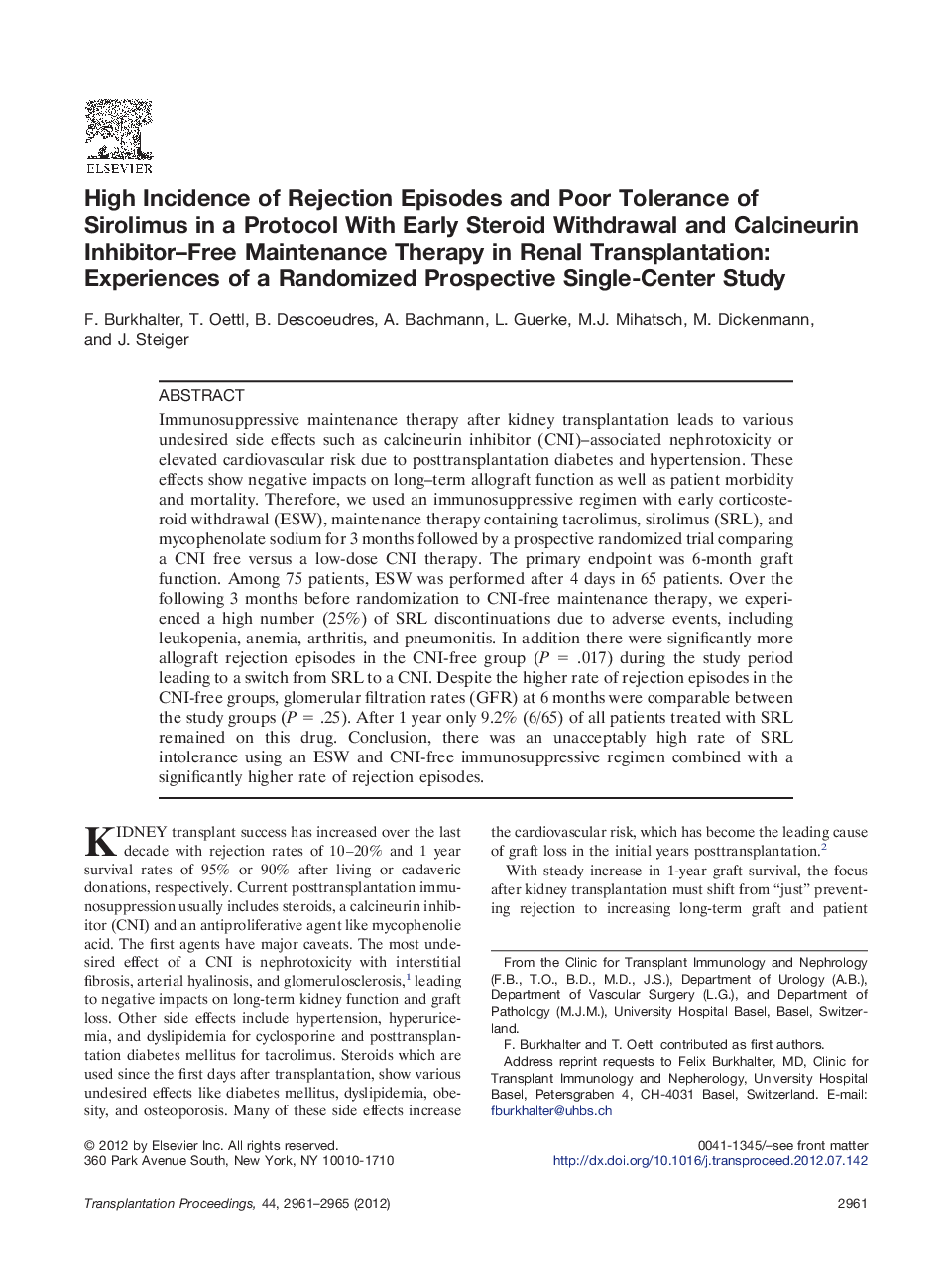| Article ID | Journal | Published Year | Pages | File Type |
|---|---|---|---|---|
| 4256215 | Transplantation Proceedings | 2012 | 5 Pages |
Immunosuppressive maintenance therapy after kidney transplantation leads to various undesired side effects such as calcineurin inhibitor (CNI)–associated nephrotoxicity or elevated cardiovascular risk due to posttransplantation diabetes and hypertension. These effects show negative impacts on long–term allograft function as well as patient morbidity and mortality. Therefore, we used an immunosuppressive regimen with early corticosteroid withdrawal (ESW), maintenance therapy containing tacrolimus, sirolimus (SRL), and mycophenolate sodium for 3 months followed by a prospective randomized trial comparing a CNI free versus a low-dose CNI therapy. The primary endpoint was 6-month graft function. Among 75 patients, ESW was performed after 4 days in 65 patients. Over the following 3 months before randomization to CNI-free maintenance therapy, we experienced a high number (25%) of SRL discontinuations due to adverse events, including leukopenia, anemia, arthritis, and pneumonitis. In addition there were significantly more allograft rejection episodes in the CNI-free group (P = .017) during the study period leading to a switch from SRL to a CNI. Despite the higher rate of rejection episodes in the CNI-free groups, glomerular filtration rates (GFR) at 6 months were comparable between the study groups (P = .25). After 1 year only 9.2% (6/65) of all patients treated with SRL remained on this drug. Conclusion, there was an unacceptably high rate of SRL intolerance using an ESW and CNI-free immunosuppressive regimen combined with a significantly higher rate of rejection episodes.
